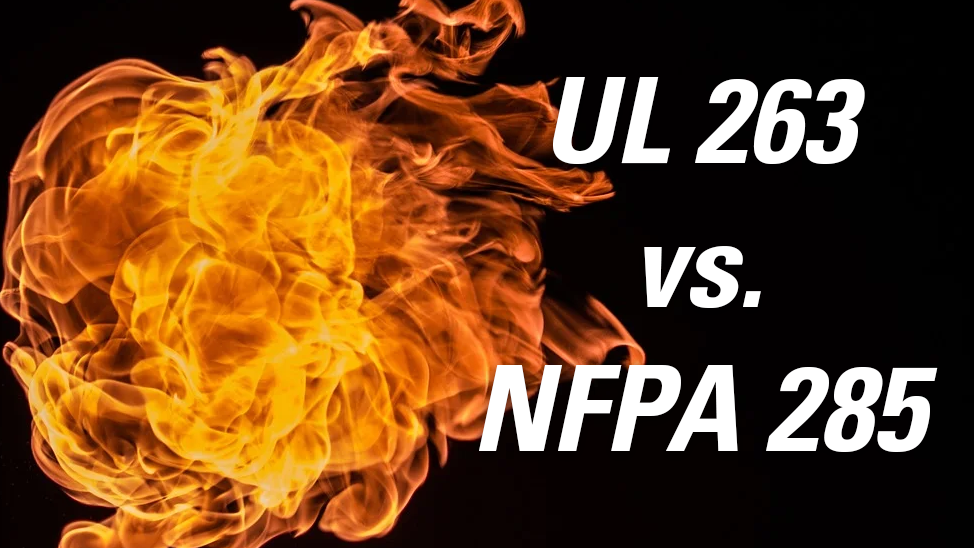In most jurisdictions throughout the US, commercial construction has specific design considerations and code requirements for fire safety. These requirements are in place to allow building occupants enough time to safely evacuate the building and to allow firefighters enough time to control the blaze before the entire structure is lost. Per today’s building codes, commercial structures are categorized into one of five “types” that dictate requirements for fire protection. These types are established by the structure’s height, occupancy, and use classifications, as well as the structure’s proximity to other buildings.
There are two widely referenced performance metrics we see when it comes to fire ratings:
1. NFPA 285: Standard Fire Test Method for Evaluation of Fire Propagation Characteristics of Exterior Wall Assemblies Containing Combustible Components
2. UL 263: Fire Tests of Building Construction and Material (Note: UL 263 and ASTM E119 Standard Test Methods for Fire Tests of Building Construction and Materials are often used and referred to interchangeably.)
Each test has unique requirements and is used for similar, but not identical, purposes. NFPA 285 is intended to measure how exterior wall assemblies resist flame. The NFPA 285 test itself measures the vertical and horizontal flame propagation across a 2-story wall assembly over a 30-minute period. In order to pass an NFPA 285 test, the flames can neither spread beyond an identified boundary nor reach above a specified temperature threshold.
UL 263 also measures flame resistance, but during this test, flames may not pass through the assembly to the opposite side, and the opposite side of the assembly must remain below a certain temperature. The objective is to measure how well the wall assembly inhibits flames from passing through the wall with the purpose being to contain a fire within a given control area. In this case, the test is designed to determine how long a particular assembly will remain intact during a fire event.
Additionally, UL maintains a repository of fire-rated wall assemblies, including 18 unique assemblies for AP™ Foil-Faced Foam Sheathing. These UL ratings for wall assemblies allow designers to capitalize on materials with excellent insulating properties, such as AP™ Foil, while still achieving an hourly fire-rated wall assembly that can inhibit or slow the spread of fire within or between buildings.
UL-rated wall assemblies are often used to meet fire code requirements, which can limit building designers to only those materials that have a UL fire-rating. Designers can use the UL repository to reference specific wall assemblies as well as all the various options, materials, and manufacturers that can be used within the assembly to meet the code’s UL fire-rating requirements.
Both UL 263 and NFPA 285 are intended to ensure buildings are designed for the safety of building occupants. For more information about NFPA fire testing, please watch our webinar. To learn more about which JM products have a UL 263 fire rating, visit the UL Product iQ page.

